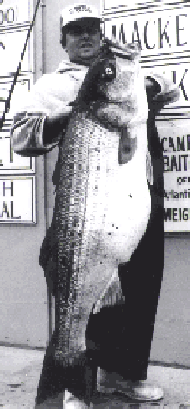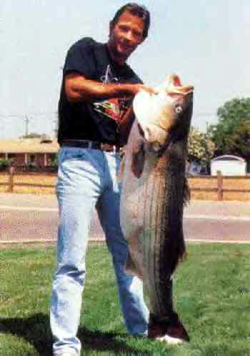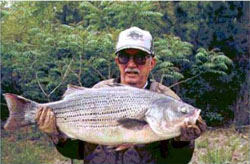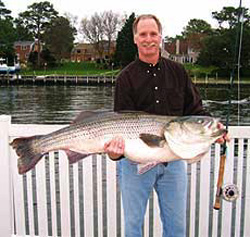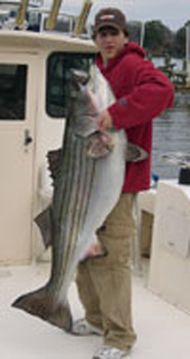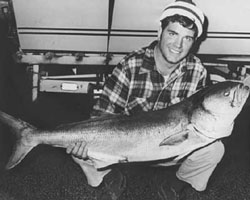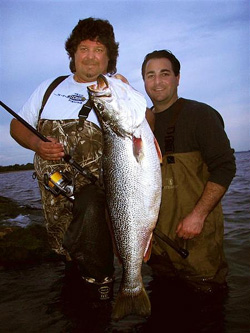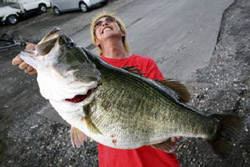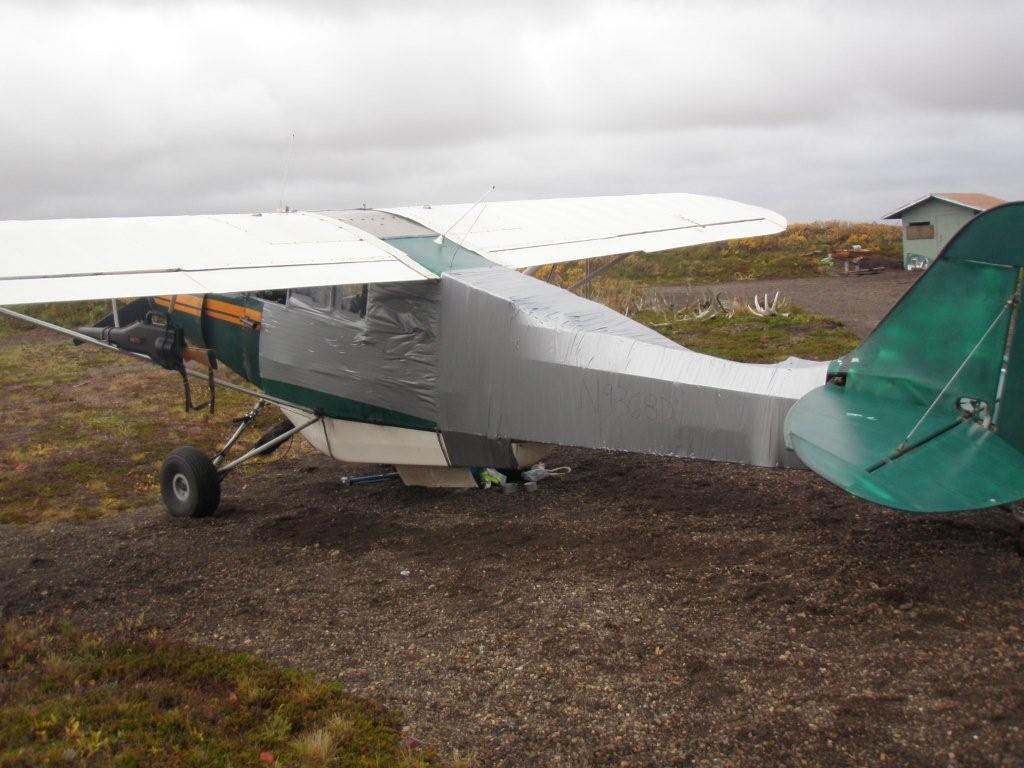Tips and Tricks for Refined Carping
Boost your catch of giant carp. Big, strong, and wary, these fish offer a superb angling challenge.
By:
Lonnie King Carp fishing in its simplest form is inexpensive. Yet, for those who wish to, there's a lifetime of refinements to be made and all kinds of gadgetry to collect. Regardless of where you are on the carp-fishing spectrum, here's a pail full of strategies that are sure to help you catch more of the big bruisers this season.
Pre-bait
Pre-baiting is probably the single most important step you can take to increase your carp-fishing success. Pre-baiting involves tossing bait around the area you plan to fish a day or so ahead of time. If done correctly, you will have carp waiting for you when you show up at your spot. Not only does this draw in fish and hold them in an area, it can also get them accustomed to the baits you plan to fish.
Just about anything a carp will eat can be used as chum. Examples include noodles, grains, and pelleted chicken feed. One of the most readily available chums and the least expensive is field corn, also called maize. While opinions vary on how to prepare it, I'm a strong believer in boiling it until it expands and is soft enough to break apart with your fingers. Otherwise, there's a chance the corn will expand after a carp eats it, potentially harming the fish if it over-feeds.
 Use a Feeder
Use a Feeder
Becoming accustomed to one style of fishing and overlooking situations that call for a different approach is all too easy for anglers. For example, using method feeders is often a great strategy, especially for flowing-water situations, where you would otherwise have trouble getting chum close to your hook bait.
A feeder device allows you to pack a ball of chum onto your line. The mix of particles you apply to the feeder needs to be sticky enough to be formed into a ball, but loose enough to break apart and disperse in the water. To prevent your hook from tangling on the cast, work your hook bait directly into the ball when forming it.
Paul Almanza from Cornwall, who distributes Top Mix chum additives, suggests that when making ground bait to be packed into a feeder, start with an inexpensive base mix such as instant oatmeal and cracked corn, then add more specialized ingredients such as flavours, larger particles, and binders to refine your mixture and get just the
right consistency.
Boost Your Baits
If ever a case could be made for the use of scents and f lavours, it would have to be for carp fishing. You're dealing with a fish that makes its living sniffing, rooting, and tasting along bottom for small food items. So, it only stands to reason the taste and scent of your bait will inf luence a carp's ability to find your offering and encourage it to eat it when it does. Applying scent directly to your hook bait is also a great way of making it stand out from other particles you might also have tossed into the water.
Many common ingredients found in your kitchen cupboard can be used to add f lavour or scent to carp baits and chum, while more and more commercial dips and sprays are also showing up on store shelves. Some common home additives include vanilla, honey, and molasses. Top commerical f lavours include Scopex, banana, tutti fritti, and tiger nut. Most of these appeal to the carp's sweet tooth, but some scents such as mussel mimic a common natural carp food. This is particularly relevant to the Great Lakes, where invasive zebra mussels can be a big part of a carp's diet.
Boilies for Biggies

Many serious carp anglers fish with boilies. These are hardened round bait balls, which carp love to eat and which most other fish seem to ignore. Carp have no trouble breaking them up with their strong pharyngeal teeth. Boilies are incredibly durable, though, lasting for days on a rig, and are capable of withstanding the most energetic longdistance cast.
Boilies can be used in a number of ways that most conventional soft baits can't, such as threaded onto dissolvable PVA string or to chum an area at incredible distance out by using a boilie thrower. Since boilies are made from wholesome ingredients, such as grains, there appears to be no consequences to feeding these baits over prolonged periods. In fact, the theory is that the regular application of boilies by anglers into European waters contributes in part to the great size fish there tend to reach, even in small waterbodies.
There are sinking and pop-up boilies. As the name implies, popups float. Fished on a bolt rig, they float off bottom, rising above sediments or low-lying aquatic vegetation. Although this might seem to look unnatural, pop-ups can help your hook bait stand out from the rest. A good strategy when fishing with a partner is to have one angler fish with a standard boilie, while the other uses a pop-up, in order to see if the fish have a preference.
Although you can make boilies, when you factor in the time and the cost of ingredients, buying boilies is less expensive and easier. Even serious carpers tend to only make thier own if they're striving for a specific flavour, colour, or size that's unavailable in stores. As for boilie colours, "Yellow, yellow, and yellow," said Mike Dragone, chairman of the Connecticut Chapter of the Carp Anglers Group and a field tester for Boilie manufacturer Concept-4-You Baits. This is based on the fact yellow is one of the most visible colours when lying on bottom and that carp readily accept a yellow boilie as food, especially when fished over or to the side of a bed of maize.
 Tricked-Out Hair Rig
Tricked-Out Hair Rig
The bolt rig capitalizes on the carp's natural tendency to "bolt" away once it feels the hook or line. The rig consists of a heavy sinker held fast to the line, so when a fish bolts, it sets the hook by itself.
This set-up is most often used in combination with a hair rig, a small line trailing from the hook on which the bait, such as a boilie, is threaded. This allows the hook point to remain fully exposed. When a carp inhales the bait, it inadvertently draws the hook into its mouth.
To prevent tangling during the cast, a short section of plastic tubing is added to the main line. A small rubber sleeve, which covers the barrel swivel and runs a short distance up the hooklength (leader), and a stiffened hook-length also reduce the chance of tangling and make ejecting the inhaled bait more difficult for fish. The rubber sleeve protects the knot from abrasion when the weight makes contact with bottom.
To prevent fish from becoming snagged on bottom, virtually all refined carp rigs are designed so the weight will pull free if the main line breaks.
Ed Jarvis from Long Sault on the St. Lawrence River catches many 30-pound carp each year. He advises that after making a long cast, be sure to drag the bait back a foot or so to straighten out the rig and dislodge the sinker from soft bottoms. Pay attention as the sinker drags along bottom, as this can tell you what kind of substrate you're fishing and whether you've inadvertently landed in a patch of dense vegetation.
Lighten Up
The lighter or more neutrally buoyant your hook bait, the easier it is for a fish to inhale. Envision a carp swimming across a bed of chum and randomly grabbing pieces on its way by. If your bait hesitates or is heavier than the rest of the baits, there's a chance the fish might miss it and just keep moving along to the next one. Also, the lighter bait should enter farther into the fish's mouth, preventing short takes.
A few ways to lighten your baits include using using smaller baits, lighter hooks, and adding floaters on the hair along with your bait. Various companies offer corn-shaped foam floaters. You can also create a snowman rig by threading both a sinking and floating boilie onto the same hair. If a two-boilie rig is too big, cut each one in half.
The Night Shift
Carp feed readily at night, and there are many reasons to fish for them then. It should be one of your first options whenever the daytime bite is not panning out or if you're unable to find time to fish during the day. This is particularly relevant when fishing ultra-clear water such as the Great Lakes, where wary carp are able to scrutinize every detail of your terminal tackle.
An electronic bite indicator is invaluable for detecting bites at night. These gizmos attach to the head of a bank stick or rod pod and signal bites by way of audible beepers and flashing lights. More advanced models come with transmitters that can even send a text message to your cell phone.
Don't Miss Drop-backs
When fishing a bolt rig, most bites are signalled by a fish instantly tearing off line from your reel. Drop-back bites, however, occur when the fish runs towards the rod. Slack line is the only indication of a bite. This can be hard to detect unless you're looking specifically for it, which is why most carp anglers attach a drop-back indicator to their line. These devices hold the line tight, in spite of wind, waves, and current. When fished in combination with an electronic bite indicator, these gadgets pull slack line through the electronic sensor, causing it to send out an audible signal, as well.
 Maximum Distance
Maximum Distance
Texan Scott Townson recently won the American Carp Society's Northeastern Divisional tournament in Baldwinsville, New York. Townson and his partner landed more than 2,800 pounds of carp over a 50-hour period. His secret was making long casts. He spooled his reels with 15-pound-test monofilament, combined with a 25-foot "shock" leader of either 80-pound braided line or 50-pond mono.
"The leader (long enough to put a few wraps on the reel when you're ready to cast) is needed to absorb the shock of powerful casts and provide greater abrasion resistance than light monofilament," said Townson. "The lighter main-line monofilament, on the other hand, casts much farther than you could if the entire reel was spooled with heavy line."
The stigma of carp fishing being a lacklustre affair is being replaced quickly by refined gadgetry and a keen awareness of the sporting qualities of these big fish, which not too long ago many considered invasive pests in North America. But, a revolution is taking place here, as more and more anglers discover how challenging big carp can be. Try refined carp fishing and see what all the buzz is about.
Issue: Fishing Annual 2009
 Asian carp are at the gates leading to the Great Lakes, threatening its ecosystem and $7 billion fishery.
Asian carp are at the gates leading to the Great Lakes, threatening its ecosystem and $7 billion fishery. 
 At 32 pounds, it was an impressive specimen. A shining example of a great fish that's overlooked in many Ontario waters, it was also a testament to applying the right rigging solutions to difficult fishing conditions. Since starting to angle for carp, I've caught them on an array of artificial lures and natural baits. But, by far, the most consistent approach involves anchoring bait on bottom - a term referred to as ledgering.
At 32 pounds, it was an impressive specimen. A shining example of a great fish that's overlooked in many Ontario waters, it was also a testament to applying the right rigging solutions to difficult fishing conditions. Since starting to angle for carp, I've caught them on an array of artificial lures and natural baits. But, by far, the most consistent approach involves anchoring bait on bottom - a term referred to as ledgering. In rivers, as the bait disintegrater, current scatters the particles downstream in a chum line. The feeder works best in large holes with moderate to slow current. It attracts and concentrates carp around your fishing area, much as pre-baiting does in a lake, but with the added advantage of quickly drawing fish in from long distances. As they suck up the feeder's food, they take in the floating hooks, which will have come free from the bait ball. The key to this rig is that the hooks must float. Without Styrofoam, they rest on bottom, lessening your chances of hooking carp.
In rivers, as the bait disintegrater, current scatters the particles downstream in a chum line. The feeder works best in large holes with moderate to slow current. It attracts and concentrates carp around your fishing area, much as pre-baiting does in a lake, but with the added advantage of quickly drawing fish in from long distances. As they suck up the feeder's food, they take in the floating hooks, which will have come free from the bait ball. The key to this rig is that the hooks must float. Without Styrofoam, they rest on bottom, lessening your chances of hooking carp. Some carp specialists prefer long rods and large-capacity reels for their power and ability to launch long casts, but they're not needed to enjoy a day of carp fishing. Most anglers have either a spinning or casting outfit that will do the job. Charlie and Nick tote 6 1/2-foot medium-action spinning rods matched with reels and either 10 or 12-pound-test line. Charlie favours a collapsible fishing rod, popular among European anglers, whereas Nick uses a two-piecer.
Some carp specialists prefer long rods and large-capacity reels for their power and ability to launch long casts, but they're not needed to enjoy a day of carp fishing. Most anglers have either a spinning or casting outfit that will do the job. Charlie and Nick tote 6 1/2-foot medium-action spinning rods matched with reels and either 10 or 12-pound-test line. Charlie favours a collapsible fishing rod, popular among European anglers, whereas Nick uses a two-piecer. Use a Feeder
Use a Feeder
 Tricked-Out Hair Rig
Tricked-Out Hair Rig
